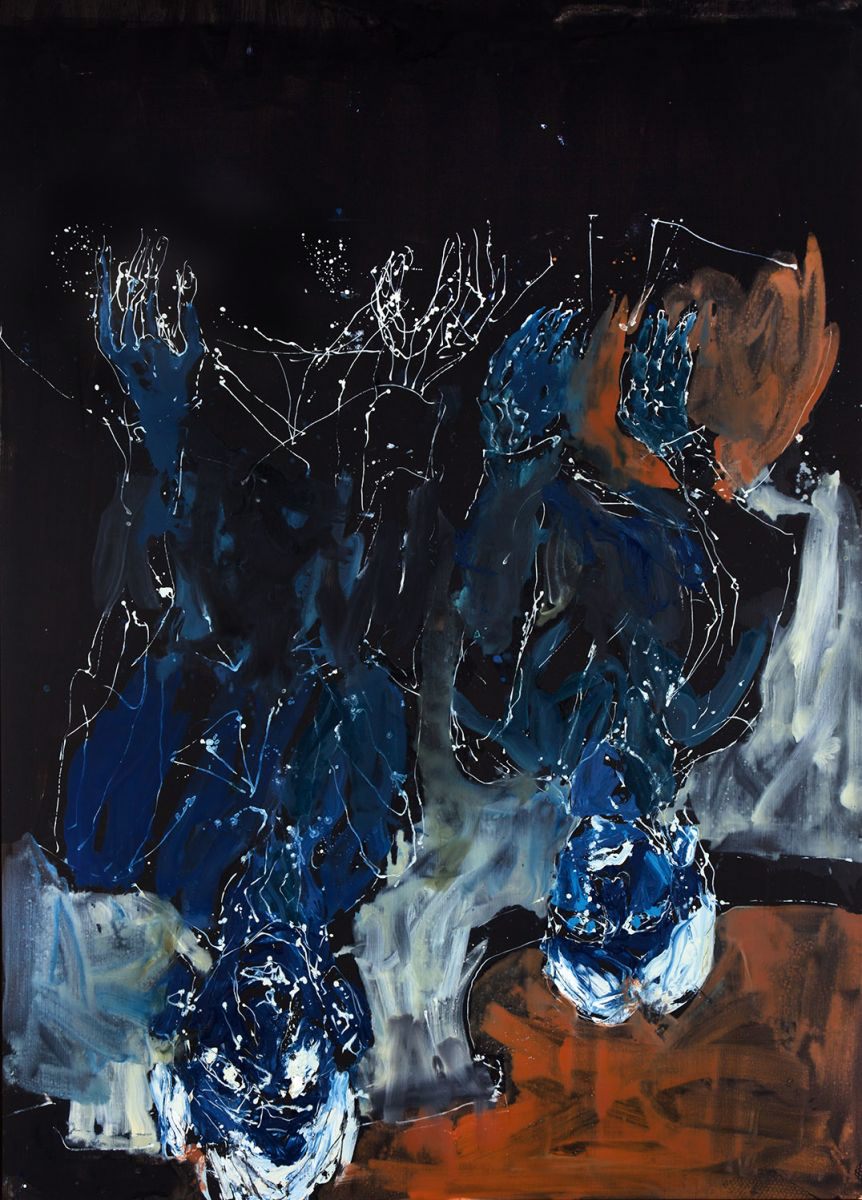- Open Today: 10.00–18.00
- Ticket
- Shop
- Membership
- TR EN

Georg Baselitz, 1938
Aus Gelbrotorange wird Blaudunkel, 2012
Hans-Georg Kern was born in 1938 in Germany. After the fall of Nazi Germany he adopted the name Georg Baselitz in tribute to his hometown of Deutschbaselitz. While studying at various academies, first in East and then in West Berlin, he closely followed Dada, Surrealism, and other European art movements. Baselitz’s works today have a wide range of influences, from sixteenth-century traditional German woodcuts to indigenous sculptures of Africa, the theories of Wassily Kandinsky and Kazimir Malevich, and the writings of Friedrich Nietzsche, Charles Baudelaire, Comte de Lautréamont, and Antonin Artaud.
In 1961 and 1962, Baselitz published a manifesto entitled “Pandämonium”. Having proved his mastery in engraving, he treated his subjects within a symbolic context. Subjects include the body and sexual images, and personal, expressive figures rooted in Art Brut and psychotic art. Adopting an attitude opposed to the ordinary, the artist conveys the hardships of the Nazi era in his works about German history through ruins, rebels, shepherds, trees, and veterans. These forms convey melancholy, but shun any feeling of pity. Through his materials and the tensions he creates in content and composition, Baselitz calls into question the human condition.
Baselitz began making his now-iconic, large-scale inverted portraits and landscapes in 1969. Among his reasons for choosing this method are his desires to defy authority, to slow down his painting process, and to draw the audience away from a fixed viewpoint by creating a sense of unease as they try to perceive the motif. In “Aus Gelbrotorange wird Blaudunkel”, as in the artist’s other works, the deformed, upside-down images created with strong brushstrokes are a reaction to past tribulations and the constructed pessimism of the present.
Painting
Oil on canvas
Oya – Bülent Eczacıbaşı Collection
Istanbul Museum of Modern Art / Long-term loan